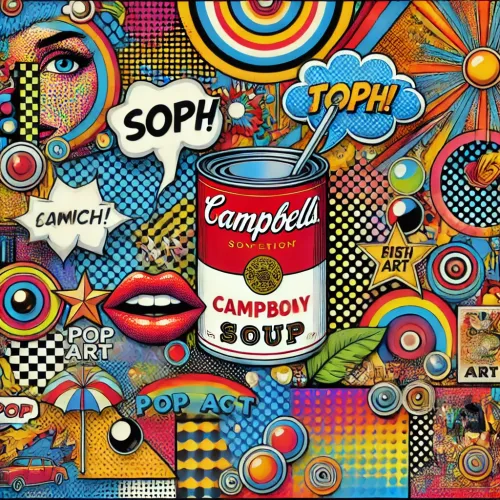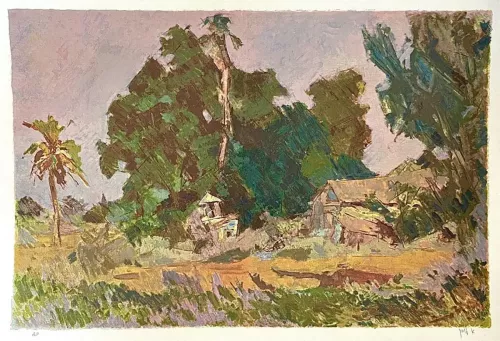How Canvas and Paint Quality Affect Market Value
Navigating the Nuances of Acrylic Paintings- Quality, Value, and Market Dynamics
Navigating the Nuances of Acrylic Paintings- Quality, Value, and Market Dynamics
The Intrinsic Connection Between Quality and Value
An acrylic painting's physical integrity and material soundness directly impact potential reception and valuation. Collectors invest in lasting creations. Understanding key material components provides insight into the appraising process and prices.
How the Right Foundation Impacts Market Value
The quality canvas should remain neutrally colored, evenly textured, and durably primed to receive layers without deterioration for decades. Flimsy commercial boards warp over time, compromising paint adhesion. Archival museum-grade linen canvas costs more yet offers structural integrity protecting artists’ visions, and benefiting values.
How Acclaimed Acrylic Paintings Set Market Trends
Andy Warhol’s silkscreened celebrities and David Hockney’s poolside vividness exemplify acrylics’ virtues. Latex dries quickly enabling prolific production for some artists. Though fragile when wet, polymeric binders form flexible films allowing thick impasto details that remain springy when dry, rather than growing increasingly brittle with age-like oils. Still, conservability concerns persist around aging acrylics.
Quality in a Tube: Decoding the Best Acrylic Paints for Canvas
Professional acrylics offer superior lightfastness, consistency, and pigment concentration than student-grade paints. Heavy-bodied paints allow thick textural applications. The soft body flows smoothly with the retention of brushstroke textures. High-viscosity paints mimic oils. All quality paints use the highest possible percentage of pure color pigments dispersed within acrylic polymers.
The Artist's Technique: How Craftsmanship Adds to Financial Worth
Precise compositions, adept color handling, and strong technical execution remain baseline requirements for collectability across media. Beyond manual skill, thoughtfully layering translucent acrylic films to transmit, attenuate, and accentuate light proves challenging. Mastering the balance between control and spontaneous gesture in acrylic pours brings dynamic energy. Such mastery accrues value.
Market Dynamics: Supply, Demand, and Acrylic Art
According to the 2022 TEFAF market report, acrylic painting has seen strong value growth recently as contemporary art enthuses new collectors. Though supply exceeds older media, icons like David Hockney set records while living artists like Njideka Akunyili Crosby and Avery Singer ride accelerating demand. Yet concerns persist around aging and restoration challenges with modern paint formulations.
Art Authentication and Quality Assurance: The Role of Expertise
Vetting authenticity and monitoring conditions require specialized expertise in modern paint mediums and degradation pathways. Conservators assess environmental exposure risks and recommend stabilization procedures like isolation varnishing. Provenance documentation also supports authentication and broadly informs valuation for desirable artists and historical works as markets evolve.
Tips for Collectors: Identifying Quality in Acrylic Paintings
Surface Consistency: Look for smooth, even textures without cracks or bumps.
Color Intensity: High-quality acrylics exhibit vibrant, rich pigments with no fading.
Durability: Opt for archival-grade paints to ensure longevity and color stability.
Opacity: Good-quality acrylics offer excellent coverage without multiple layers.
Blendability: Check for ease in blending colors without losing vibrancy.
Drying Time: Consider paints with manageable drying times for your technique.
Adhesion: Ensure strong adherence to various surfaces without flaking.
Lightfastness: Look for paints labeled with high lightfastness ratings to resist fading.
Consistency: Consistent viscosity across colors indicates quality control.
Brand Reputation: Trust established brands known for consistent quality and innovation.
The Balanced Equation of Form and Function in Acrylic Art
In assessing acrylic works longevity and collectability, structural integrity both in initial craftsmanship and ongoing preservation capacity contributes enormously alongside less tangible aesthetic merits around originality and visual intrigue. Balancing these facets poses challenges but thoughtfully mitigates risk when building collections anchored in artists’ mastery of materials, techniques, and concepts best positioned to deepen and endure through time if appropriately safeguarded.








































































































































































































































































































































































